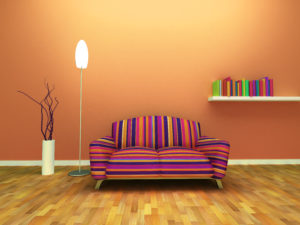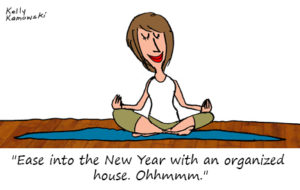Planning to move this Summer? Don’t pack a box until you read this.
Moving is the perfect opportunity to assess whether or not you need to downsize your home’s contents so that you don’t end up spending the time and money to move, insure and unpack items you don’t really want. There are so many great reasons to downsize. Here are some of my favorites:
- You’ll sell your old home faster. An uncluttered home is massively appealing to home buyers. Nowadays, real estate agents won’t even consider listing your home until it’s cleared of all your personal belongings.
- It’s safer. The less clutter on surfaces, stairs, floors or near electric or gas appliances, the better. So even if you’re not moving this alone is one great reason to downsize.
- You’re the one in charge! You get to decide what stays and what goes and if you give yourself enough time, you won’t be making those decisions under pressure.
- You can preserve memories. It’s easier to find the irreplaceable things in your life when you can easily find them.
- Less stress. You will feel the peace of mind that comes from living an uncluttered life, surrounded by the people and things you enjoy the most
- Save money. The less you move, the less it costs.
What to take, what to sell, what to donate
Not sure what you’ll take with you? That’s okay, you probably have a lot you don’t want now. Start to downsize well before you move and you get to decide what goes — nobody pressuring you! Best of all, you won’t make hasty decisions in the days leading up to your move that you may regret later.
If you have items you plan to sell such as good quality furniture, jewelry, luxury brand clothing or valuable artwork, you will first need to determine whether these items are in demand. Check out both local estate sellers and consignment services as well as online estate services that can consign or buy your items outright. One easy way to do this is to send them a few photos. It’s free and you’ll know pretty quickly what they may be worth. One word of caution, don’t expect the value to equal what you paid for an item or what you “think” it’s worth. If the item has value, they too will want to make a profit so they will never buy it for what it’s worth from an insurance standpoint.
Want to keep it simple and easy? In the San Francisco Bay Area there are services such as Remoovit.com that will literally take everything you don’t want and haul it away for one flat fee. Anything they can sell, they will and you will get fifty percent of the final sale price. Whatever can not be sold, will be donated or recycled. Remoovit once sold a rusty old “banana seat” bicycle belonging to one of my clients for $1,200. She got half of that which paid for the hauling of everything else! You pay by the truck load (or fraction thereof). It’s a one-stop service for those who need their homes to be emptied quickly but don’t want to simply give away items that may have market value.
Where do I start?
Not sure where to start? Begin with whatever area of your home you’ve been wanting to tackle but just haven’t had a good enough reason. Now you do. You’re moving and you want to surround yourself with the things that you love and use most. This doesn’t mean everything else goes in the trash. On the contrary, it’s likely you have usable items that somebody else wants (any may even pay for!) including family, friends, neighbors and members of your community.
Set aside one area of your home where you will sort and label as you go. A dining room is a good place for this as it’s less likely you will be entertaining at home in the weeks leading up to your move. Otherwise, pick an area that you occupy less frequently such as a guest room. Here are some other helpful tools you will need:
- A folding table or work surface for sorting (if not in your dining room).
- Supply of large, plastic yard bags for donating soft goods such as clothing, purses, accessories, good quality linens, outerwear. Keep in mind most charities will not accept bed pillows, bedding, or old linens. Old towels may be donated to local animal shelters.
- Small moving or packing boxes, preferably ones with handles. Use these to donate home decor, small household items, kitchen tools and other hard-edged items.
- Blue or green painter’s tape to label furniture, framed art work, lamps and other large items you no longer want.
- A couple of black “sharpie” markers to use with the painter’s tape to label boxes, bags and unwanted items.
- A glass or bottle of water (you’ll want to stay hydrated as you work!)
If you are lucky to have family nearby, especially strong children or grandchildren, ask them to load items in your car you wish to transport yourself or ask them to take them for you. Otherwise, you can count on the help of the charities that will pick up your items by truck.
Make a list of your preferred charities that accept household goods. Be sure they are available before you move. Many charities book 2-3 weeks in advance.
Don’t forget your local church bazaar, senior center and friends of the library. There may also be a veteran’s group in your area that will pick up your donated goods. Animal shelters and your local veterinarian are always in need of clean, old towels. Women’s shelters can use your unused, unopened toiletries. (Think of all those unopened hotel shampoos and body lotions you’ve collected over the years.) Local hospice stores, or other charities that operate re-sell or “thrift” stores are a great way to donate. Not sure where to donate clothing? Ask your local consignment store. They are usually a wealth of information. Lastly you will be grateful for the help of charities that do truck pick up. Not sure which ones serve your area? Do a Google search, “charities that do truck pick up near me.“
Helpful Tips for Downsizing
- Start early. Don’t wait until a week before you move. Give yourself at least a month or more so you don’t have to make decisions under pressure.
- Focus on one room at a time. This way you will see progress and stay motivated.
- Don’t buy more! Now is not the time time to go clothes shopping or re-stock your pantry. Use up what you have.
- Segregate your paper. Don’t attempt to “go through” your files until you’ve downsized your other household goods. Instead, contain all your paper files in banker boxes and use the days leading up to the move to determine what you need to keep.
- Use painters tape (not sticky notes – they fall off) to label items for donation
- Save your back. Use charities that offer truck pick up to take your boxed and bagged items as well as your donated furniture
When to ask for help
- If you are feeling overwhelmed by the whole process and know you can’t do this alone or are worried you would be overwhelmed by the memories and emotions often associated with large-scale downsizing
- If you are working full time or traveling a lot and know you could use some help to make the process go faster
- If you are far away from family or friends and need help with the physical work of sorting and transporting items for you
- If you have physical limitations or just don’t have the endurance to deal with it yourself. This is especially true if you are clearing out large storage areas such as basements, garages and storage sheds.









